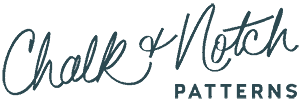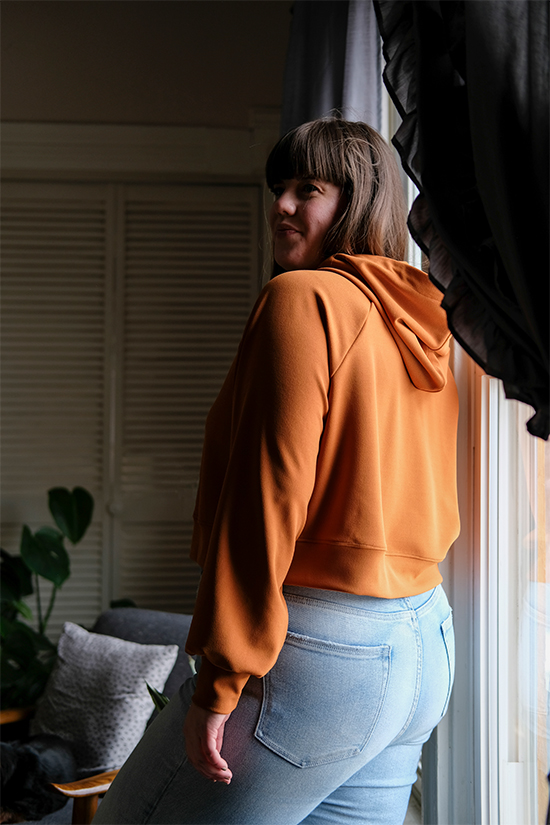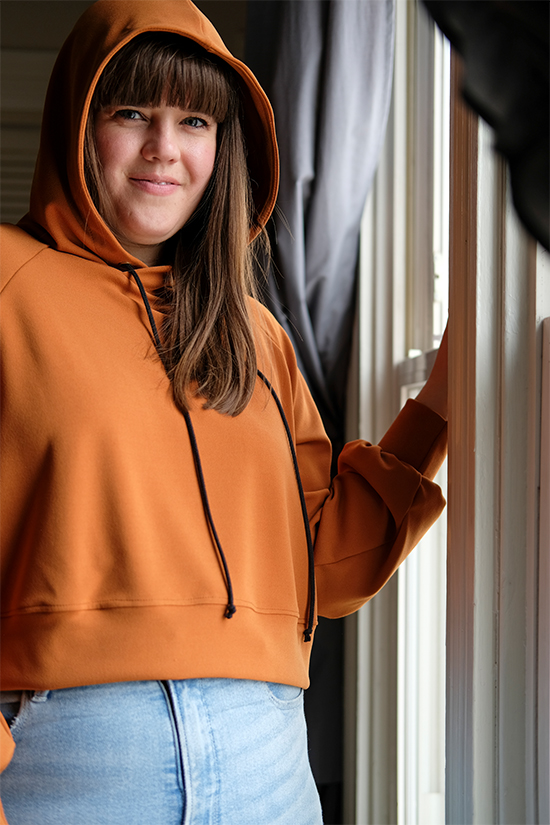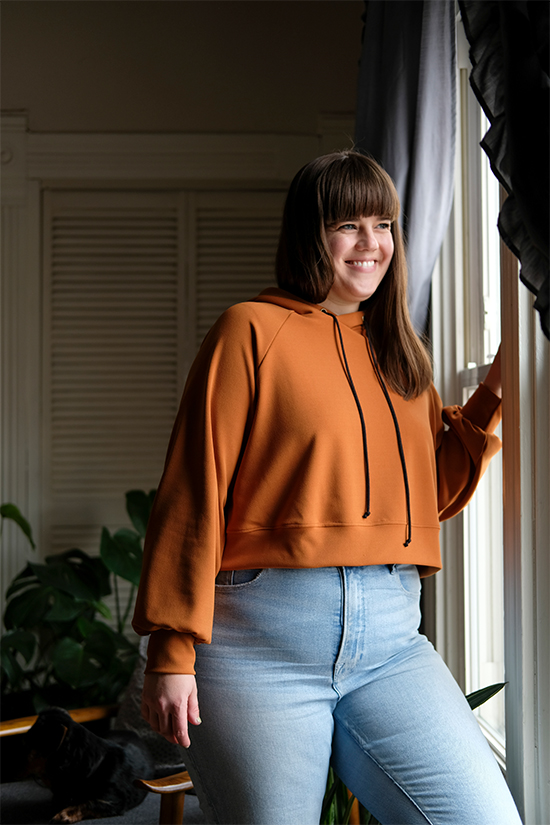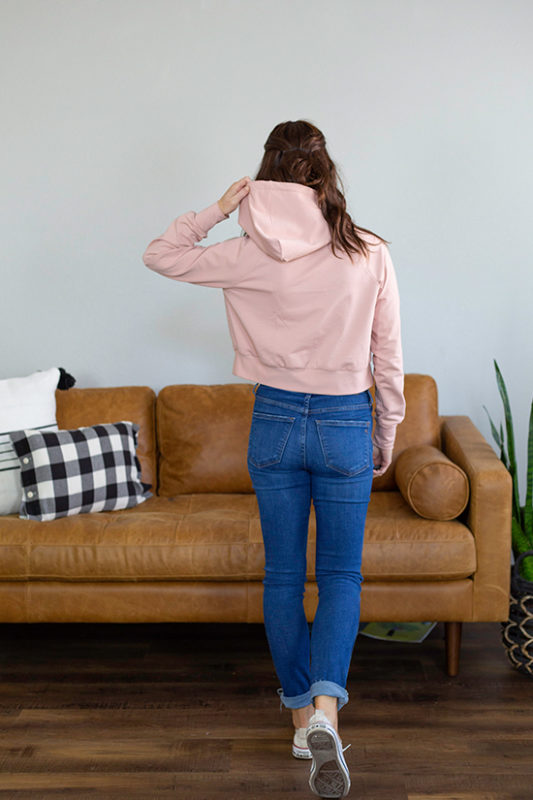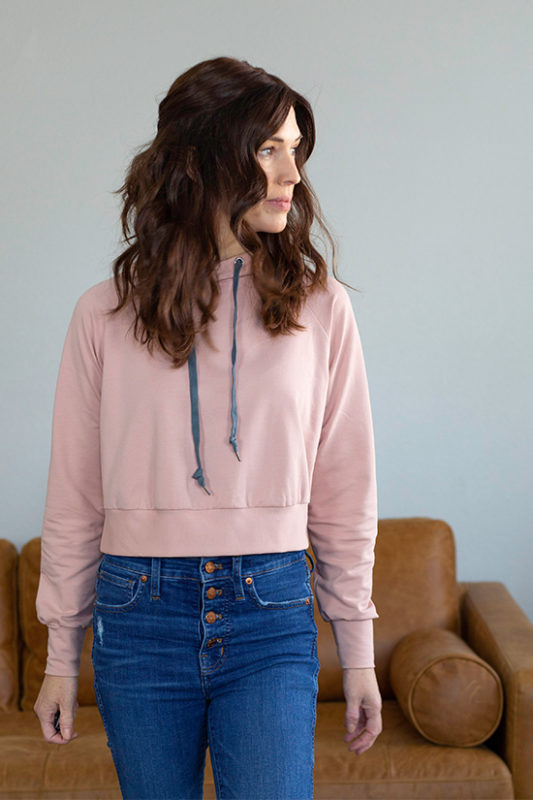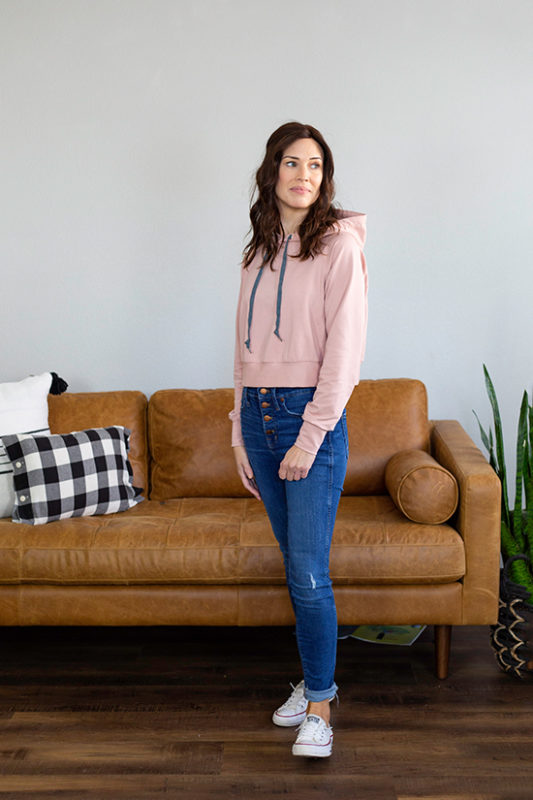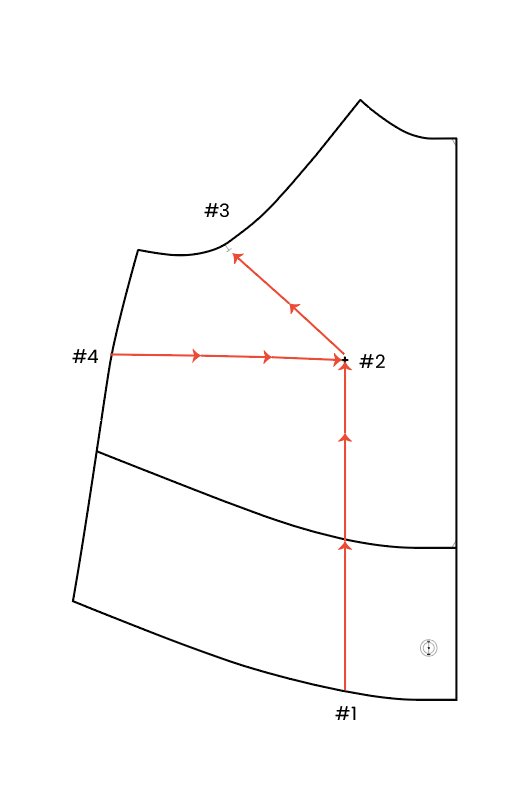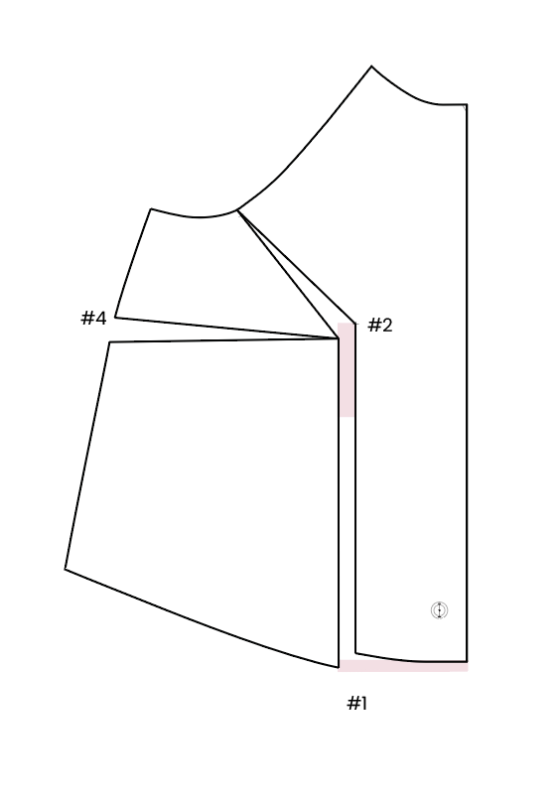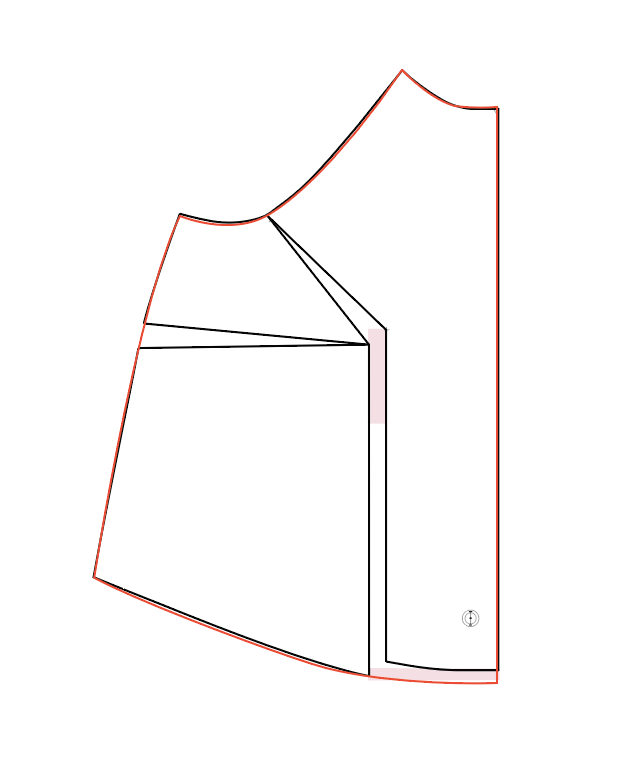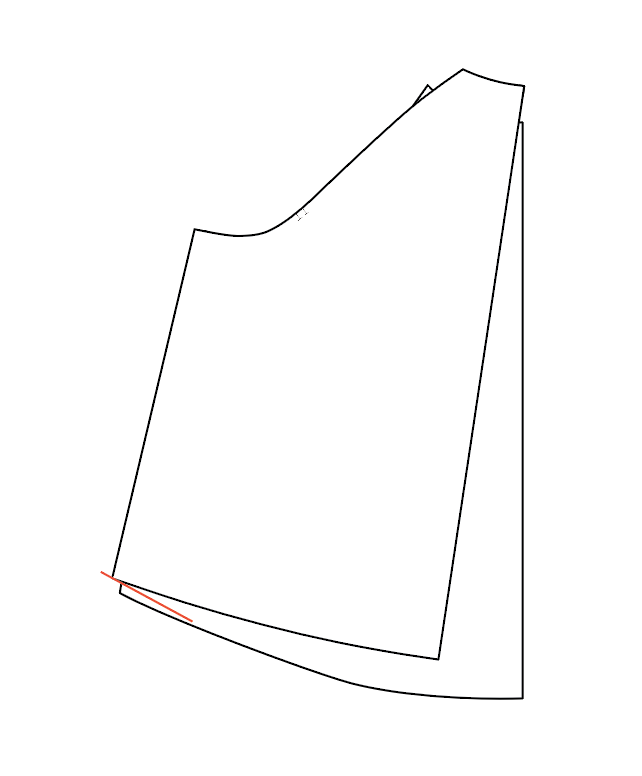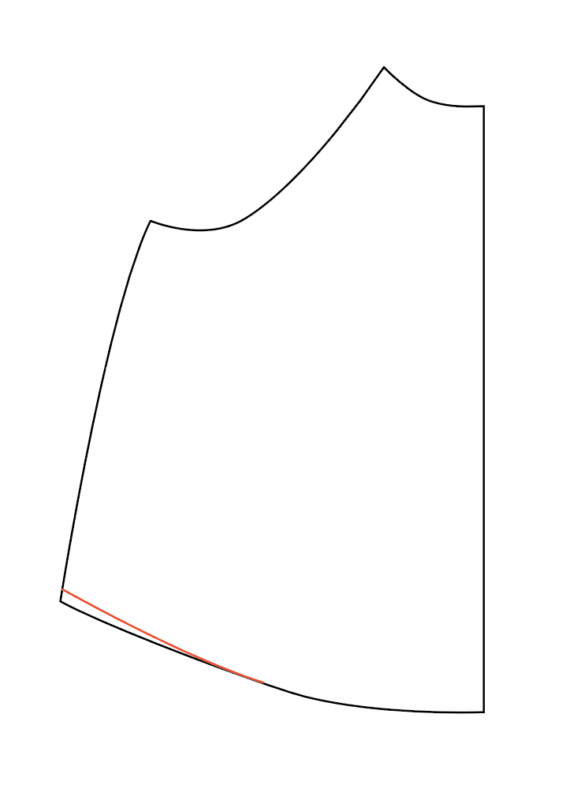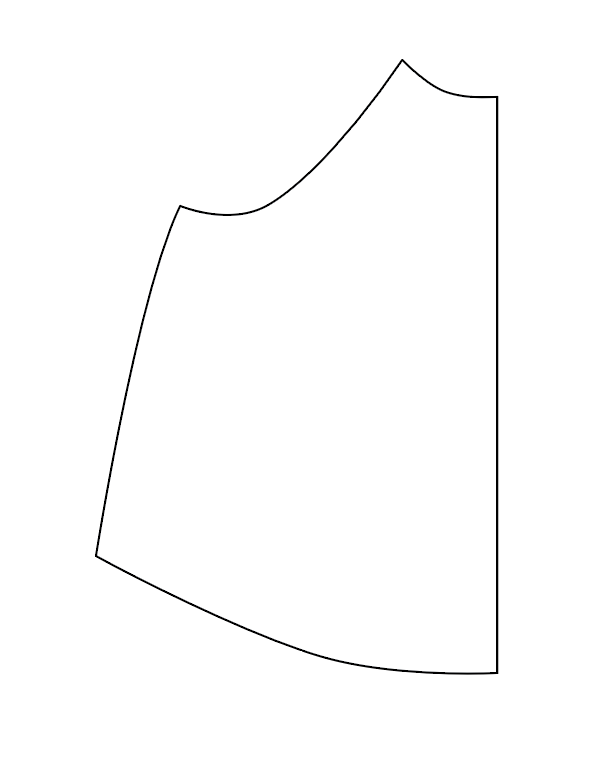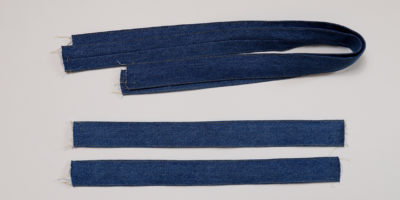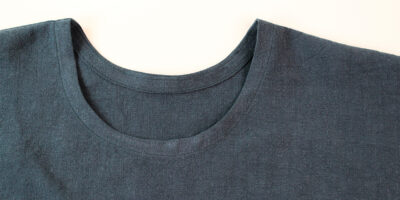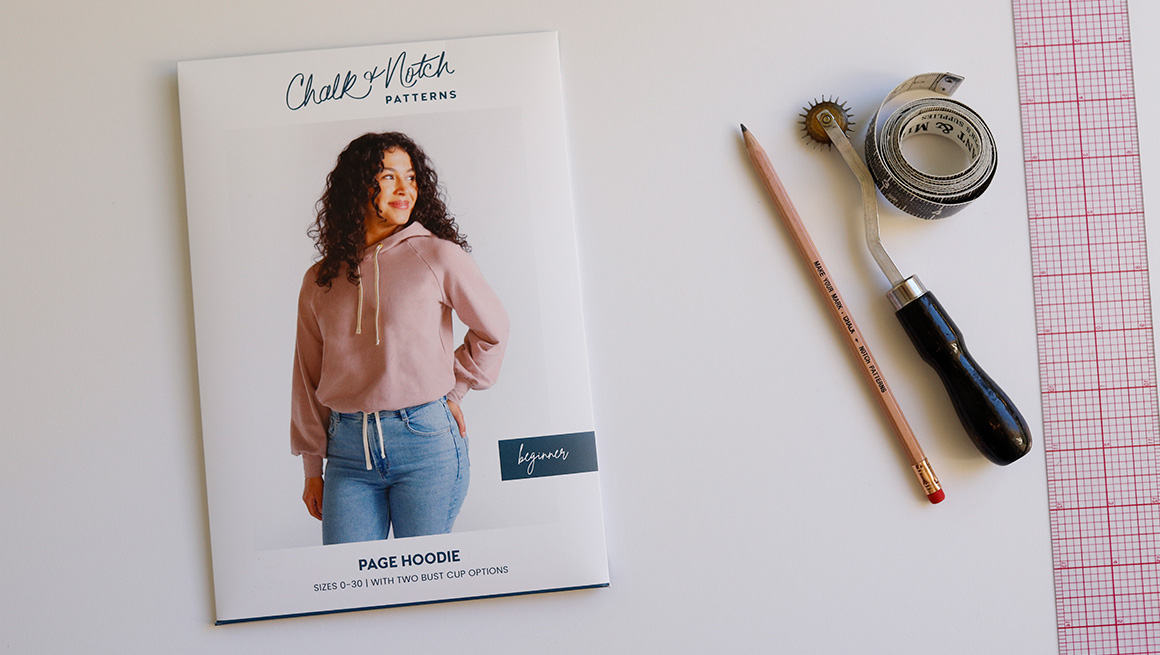
Today I’m going over the most common fitting adjustments for the Page Hoodie. During testing, I’m able to see the pattern on about 50 different bodies. Helping testers with fit helps inform what fitting and custom adjustments I talk about in this post. I will say that because the Page is a knit garment with 8″ (20 cm) of ease, fitting is pretty minimal due to the nature of the garment and relaxed fit, but I’ll talk about the most common fitting issues that came up in testing.
I’m also happy to share some really stunning tester photos in this post today, too. Thanks so much to Kaylee & Alexis for letting me share their photos with you!
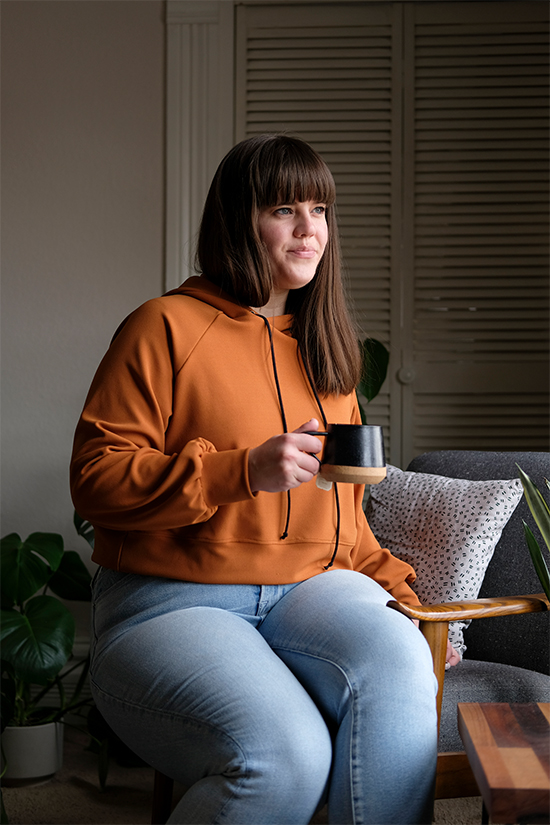
Kaylee – kayleesaurus_rawr
Fabric || Poly Crepe Stretch Knit
Before we get started, I always like to add a note that the goal should be to create a comfortable garment that you will enjoy wearing. I don’t think it’s important to get rid of every single drag line and pull, so be kind to yourself as you are analyzing your fit. If you have specific questions about fitting the Page Hoodie, you can always reach out in our Chalk and Notch Facebook Group or email me directly at: [email protected].
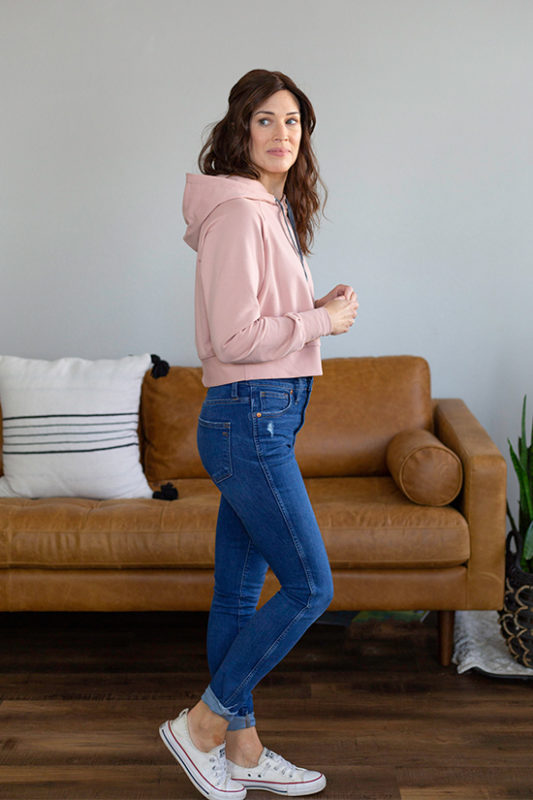
Alexis – myysweetsunshine
Fabric || French Terry
Drawstrings
First things first, make sure you have a copy of the Page Hoodie or the Mini Page Hoodie!
HOW TO PICK A SIZE
First, make sure you take new measurements before starting any project because our bodies change, and starting with accurate numbers is the first step to getting a good fit. When fitting the Page Hoodie, you want your high bust and full bust body measurements. For the most part, the waist and hips are not going to inform your decision on which size to pick, but if you have concerns you can reference all the body measurements.
Cup Size
Determine what cup size to make. The cup size is determined by calculating the difference between the high bust and full bust. If the difference between your high bust and full bust is between 0” and 2” (5 cm), use the A/B cup. If the difference is between 2” (5 cm) and 4” (10 cm), use the C/D cup.
Body Measurements
It is very common to fall across a few different sizes. After you determine what cup size to make, pick a size that works for your high bust and full bust. If you fall between sizes, you can size down due to the ease included in the pattern. As a general rule, the waist and hip measurements will not determine the size of this particular pattern, but you know your body best and you may want to grade out for your hips.
Garment Measurements
This style is designed to be a relaxed fit and has 8” (20 cm) of ease through the bust.
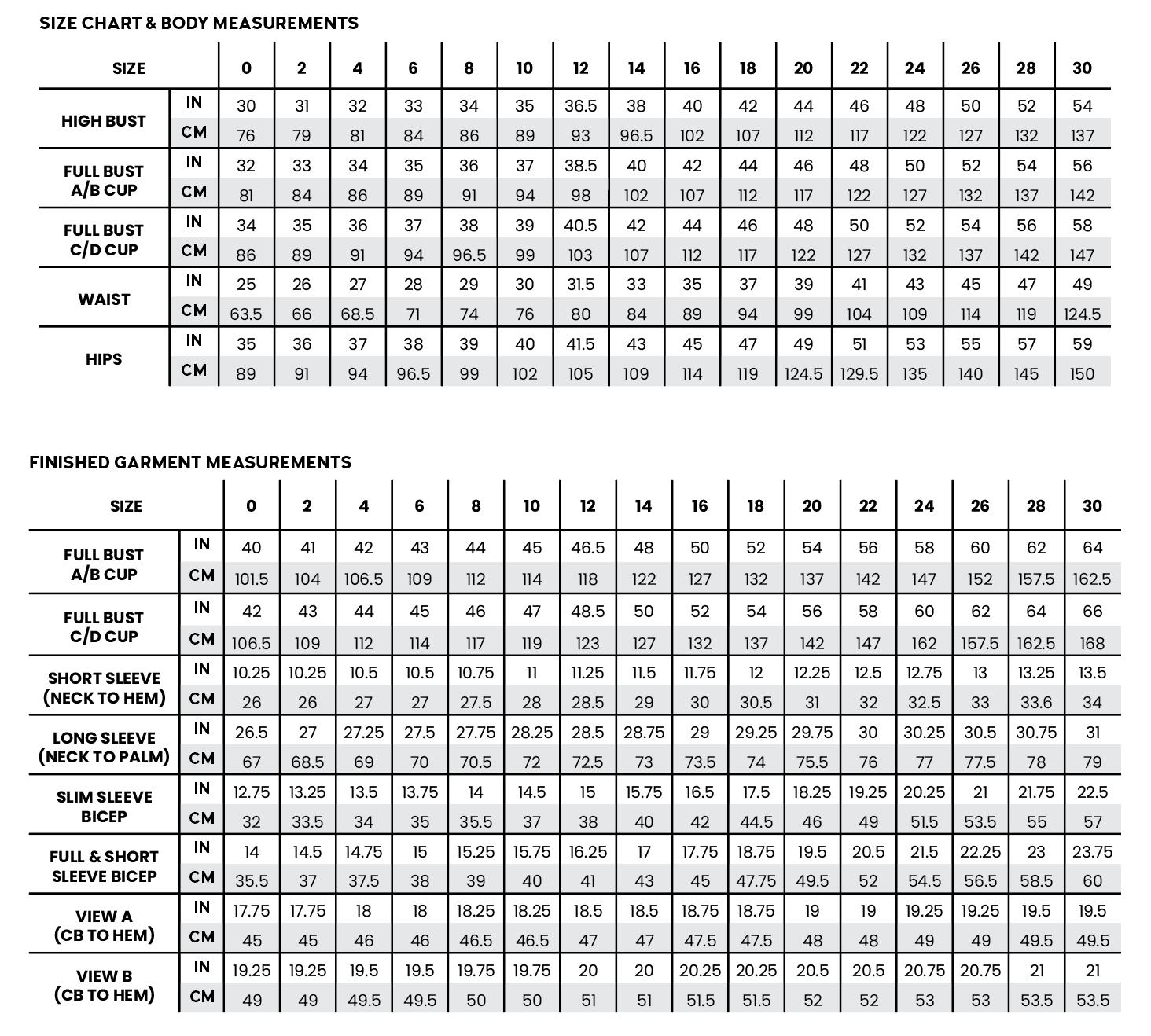
MAKING A MUSLIN
I will always advise you to make a muslin or toile (test garment) before cutting into your final fashion fabric. Fabric will affect fit, and you won’t get a feel for the real fit unless you sew it in a comparable fabric.
CUSTOM ADJUSTMENTS
For reference, Chalk and Notch patterns are designed for a height of around 5’7″ (174 cm). The fit models are all over 5’7″ (174 cm), but all of the Chalk and Notch patterns are tested on a range of heights. Also, remember that length does not always equate to your height or arm length.
ADJUSTING THE BODICE LENGTH
The Page Hoodie is designed to have a cropped length, finishing just below your natural waist. The additional length on View B creates a blouse effect when the waist drawstring is tied but should also finish as a cropped length.
The length of the bodice may need to be adjusted based on your height or based on your personal preference. To determine if you need to make adjustments to your bodice, measure from your center back neck to your desired length and check it against the finished garment measurements.
When adjusting the length, make sure to adjust both front and back bodice pieces. To adjust the bodice:
- Cut the front and back bodice pattern pieces horizontally at the indicated line.
- If adding length, add paper and add the amount desired.
- If shortening, overlap at the cut line the amount desired.
- Re-draw the side seams.
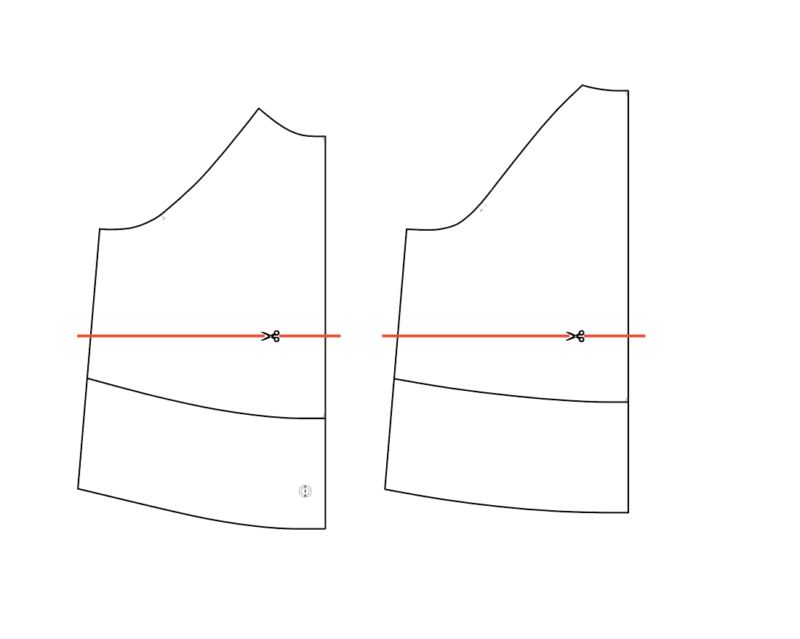
ADJUSTING THE SLEEVE LENGTH
The long sleeve should finish mid-palm. To determine if you need to make adjustments to your sleeves, measure from your side neck to mid-palm and check it against the finished garment measurements. The length of the sleeves may need to be adjusted based on your height or preference.
To adjust the sleeves:
- Cut the sleeve pattern piece horizontally at the indicated line.
- If adding length, add paper and add the amount desired.
- If shortening, overlap at the cut line the amount desired.
- Re-draw the sleeve seams.
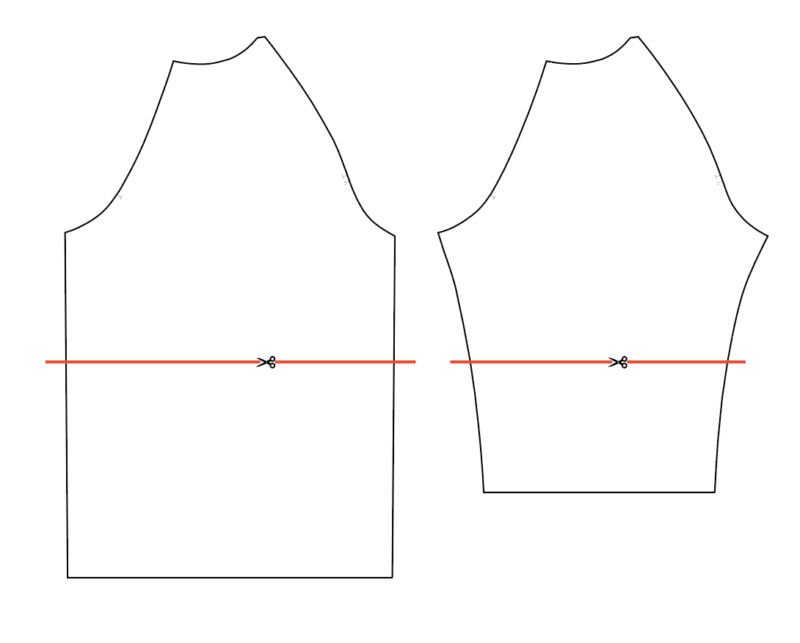
ADJUSTING THE HOOD
The hood is designed to be on the smaller side to avoid a heavy hood. You may find that you need or prefer a larger hood. You can add height and/or width to the hood as long as you keep the neck measurement the same.
- If adding length, add paper and add the amount desired.
- If shortening, overlap at the cut line the amount desired.
- Re-draw the hood seams.
- If adding width, freehand more width at the crown of the head and/or extend more width towards the front opening.
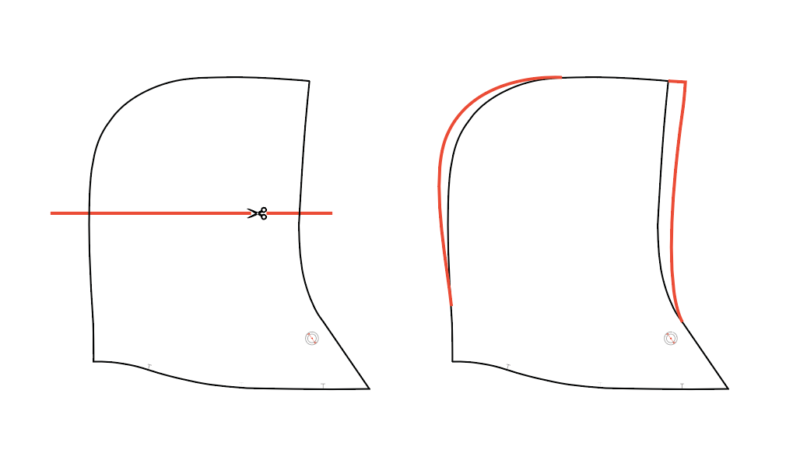
BLENDING SIZES
If you prefer to grade out for your hips, you can print two sizes and blend from the bust to the hips. In this case, just remember to print the correct hem band to match your hip size.
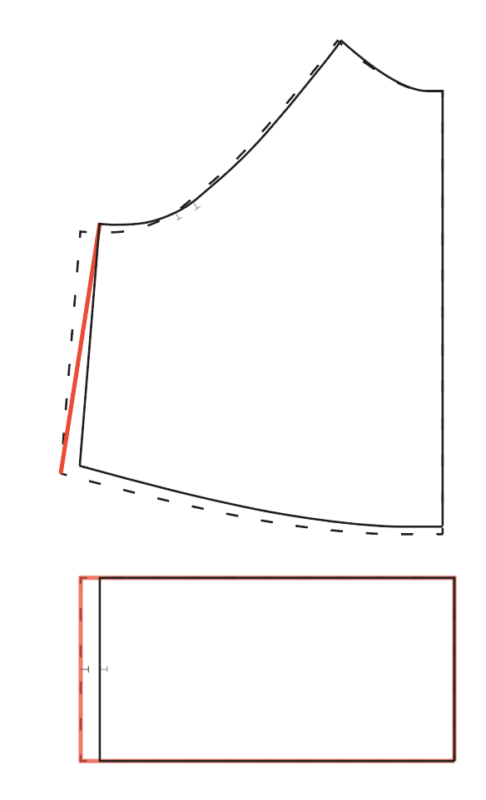
FULL BUST ADJUSTMENT
If you have over 4” (10 cm) between your high bust and full bust, you may need a Full Bust Adjustment. Use the C/D Cup Bodice. Decide how much more ease you need through your bust. Add half that amount to your pattern. If you need 1” (2.5 cm), then you will add 1/2” (1.25 cm) to the pattern.
- Cut from the waistline (#1) to the bust point (#2) and then to the armhole (#3), not cutting all the way through at the armhole. Also cut from the center of the side seam (#4) to the bust point (#2) without cutting all the way through at the bust point. Lay this on top of a new piece of paper.
- Open the ease at the bust (#2), parallel to the hem (#1), shown in PINK. This will open ease at the points (#1 & #4), creating a longer side seam and added length through the center front. Tape this new shape down on the paper.
- Trace your new bodice piece, shown in RED, smoothing the side seam and hem. The center front hem will be longer and the side seam will have a slight curve.
- Place your back pattern piece to measure the side seam length.
- Trim the excess length from the hem.
- You have completed the FBA.
I hope this post helps explain how and when to do custom adjustments while fitting the Page Hoodie Pattern. It’s totally worth the time to make a muslin, make any adjustments and update your printed pattern. Remember to write down some notes for yourself so that when you come back to the pattern, you know what adjustments you have made.
XO, Gabriela
